I first started making pizza during the Johnson administration
That's how long ago it was.
My first memory of pizza was around 1966, when I was five years old, at Spangdahlem air force base in West Germany, when my parents would have some of their friends over for an Italian-themed evening. My mom 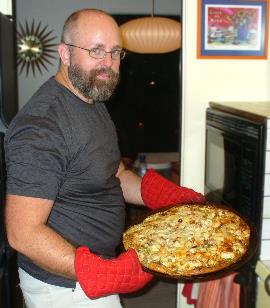 would make pepperoni pizza for the adults, who often played cards or had cocktails or listened to Herb Alpert or did other adult things, and she'd make spaghetti for us kids, since we were young and suspicious of pizza, especially the mysterious vegetable toppings. (Green olives? That was something adults put in their drinks.)
would make pepperoni pizza for the adults, who often played cards or had cocktails or listened to Herb Alpert or did other adult things, and she'd make spaghetti for us kids, since we were young and suspicious of pizza, especially the mysterious vegetable toppings. (Green olives? That was something adults put in their drinks.)
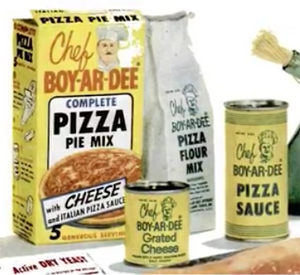 Eventually I got up the nerve to want to try the more adult alternative, and my mom would cut me off a bit of pizza crust, with a red line of tomato sauce painted up the side. It wasn't bad. It probably wasn't very good, either. My mom used the Chef Boyardee pizza-in-a-box kit that most housewives used in the '60s, augmented with a bit of pepperoni or maybe a few sliced green olives. Nevertheless, it was better than the same old spaghetti, and eventually I grew brave enough to eat a whole slice, spicy pepperoni and all. I began helping her make the pizza, usually by carefully placing the pepperoni slices on the pie, and then working up to help her mix the simple dough.
Eventually I got up the nerve to want to try the more adult alternative, and my mom would cut me off a bit of pizza crust, with a red line of tomato sauce painted up the side. It wasn't bad. It probably wasn't very good, either. My mom used the Chef Boyardee pizza-in-a-box kit that most housewives used in the '60s, augmented with a bit of pepperoni or maybe a few sliced green olives. Nevertheless, it was better than the same old spaghetti, and eventually I grew brave enough to eat a whole slice, spicy pepperoni and all. I began helping her make the pizza, usually by carefully placing the pepperoni slices on the pie, and then working up to help her mix the simple dough.
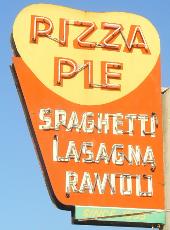 My mom continued to use the pizza-in-a-box kit after we arrived back in the states in the summer of 1967. Around 1968 or so, she discovered a simple pizza recipe on the back of the Pillsbury flour bag. Not a very active bread baker, she found the recipe wasn't too difficult, so she began making her pizza dough from scratch from then on, and I began assisting her. I learned how to chop onions and peppers, and how to place the various ingredients on the pizza.
My mom continued to use the pizza-in-a-box kit after we arrived back in the states in the summer of 1967. Around 1968 or so, she discovered a simple pizza recipe on the back of the Pillsbury flour bag. Not a very active bread baker, she found the recipe wasn't too difficult, so she began making her pizza dough from scratch from then on, and I began assisting her. I learned how to chop onions and peppers, and how to place the various ingredients on the pizza.
And at some point, around 1969 or 1970, I said, stand aside, Mom, and let me do it. And she did.
And I've been making pizza ever since.
If it's Friday, it must be pizza
Friday nights were us kids' favorite night of television. Around 1971 we settled in to a Friday-night routine of watching the Brady  Bunch, the Partridge Family, the Odd Couple, Room 222, Love American Style, and whatever else filled out the ABC schedule.
Bunch, the Partridge Family, the Odd Couple, Room 222, Love American Style, and whatever else filled out the ABC schedule.
It seemed like the perfect night for pizza:
- My mom worked all week, and she could take a rest from making dinner on Friday nights, since I'd be doing all the cooking.
- Pizza was a great food to eat in front of the TV, being handheld and modular. You could use a fork if you wanted to, but it wasn't really necessary. Thus, us kids could hunker down on the living room floor in front of the TV and watch our beloved Friday night lineup, with just a plate and a napkin.
- And a big meal of pizza, my favorite food, was a great way to start the weekend. And since I was making it, I could make as much of it as I wanted, perhaps even enough for leftovers the next day.
I started off making pizza the way my mom made it -- with pepperoni, a little onion, a little green pepper perhaps. Olives didn't appeal to us kids, and my brother wouldn't eat mushrooms. Eventually we grew to like all the basic pizza toppings -- pepperoni, onions, peppers, mushrooms, olives, ground beef, ground sausage -- and most of my pizzas became "supremes," loaded down with all those basic pie toppings. (I'm not sure that we ever branched out and tried anything different, like ham, salami, anchovies, bacon or garlic.)
At some point my mom came across a recipe for a "crazy crust" pizza -- a liquid, eggy batter that miraculously firmed up in the oven and became something like pizza. We were intrigued by the different taste, although we didn't like it as much as the regular doughy pizza. It was very easy to make, though, and it became our fallback alternative. I added it to our schedule by regularly making two large round regular pizzas, and one small rectangular crazy crust, which I would sometimes use to try out different flavor combinations. I appreciated the crazy crust pizza because it would fill up the members of my family, taking the pressure off the other, better pizzas.
For me, it was all about the crust and the toppings. Pizza sauce, for me, was a can of tomato sauce with a teaspoon of Italian seasoning stirred in. Eventually I branched out and tried other kinds of tomatoes -- crushed tomatoes, diced tomatoes, jarred spaghetti sauce -- and even today, I just use whatever's in the cupboard. These days it's most often Classico spaghetti sauce, because it's less sweet than other jarred sauces.
I stopped making pizza for the family once I moved out, but on visits to my mom or dad, they still occasionally ask me to make it again. And of course, in the years since, I've made pizza for myself, for friends, and for Jack. One of my favorite ways to entertain is to have friends over for homemade pizza, followed up by board games.
My basic dough recipe
The Pillsbury dough recipe may be disparaged by some, but for a non-Italian, non-New Yorker suburban kid with no culinary training, it worked just fine. One note: I add flour by instinct, so these proportions may be off, depending on the quality of your flour, and whether you live in an area of high or low humidity. I recommend just adding flour until you're able to knead it easily, and err on the side of adding less flour, rather than more. I also like to add a small portion of rye flour, about half a cup's worth (any more than that and the dough will come out too heavy, since rye doesn't have the same gluten as wheat).
This recipes makes two thick-crusted pizzas:
| Steve's Pizza Dough |
- 1 3-pack yeast
- 3 cups warm water
- 3 tsp. salt
- 3 tsp. sugar
- 9 TB. olive oil
- 6+ cups flour
In a big bowl, dissolve yeast in water, then add salt, sugar and oil. Mix. Start adding flour, then stir until mixture is too stiff to stir. Start kneading, and add flour as necessary until the dough is stiff and unsticky, about 5 to 10 minutes. Spread 1 TB. oil on bottom of bowl and place dough inside, then turn over so each side of the dough is oiled. Place in warm, undrafty place for about an hour to rise. After it rises, punch down dough and spread over 2 large round pizza pans that have been oiled (or greased with shortening) and dusted with cornmeal. Preheat oven to 400°. Add sauce, toppings and cheese, and bake for 30 minutes.
|
And for historical documentation: |
| Crazy Crust Pizza Dough |
- 1 cup flour
- 1 tsp. salt
- 1 tsp. Italian seasoning
- 1/4 tsp. pepper
- 2 eggs
- 2/3 cup milk
Preheat oven to 425°. Lightly grease and dust with cornmeal or flour a 14-inch or 12-inch pizza pan or jelly roll pan. In small bowl, mix ingredients. Pour batter into pan, tilting pan so batter covers bottom. Arrange toppings over batter. Bake 25 to 30 minutes until pizza is deep golden brown. Remove from oven, drizzle with pizza sauce and sprinkle with cheese. Return to oven for 10 to 15 minutes.
|
|
Thoughts on toppings
When I make pizza nowadays, I try not to load it down with toppings. For one thing, the heavier the toppings, the less the dough rises in 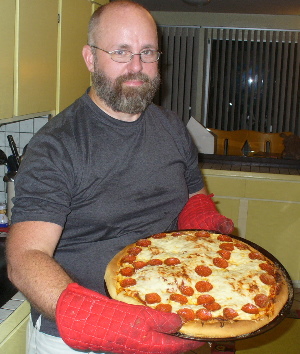 the oven, leading to a thin, soggy crust. Loading up a pizza with everything but the kitchen sink also means that no ingredient really shines, and it all just tastes sort of homogenous. If I'm going to go to the trouble of pitting black Kalamata olives for pizza, then I want to taste those Kalamata olives.
the oven, leading to a thin, soggy crust. Loading up a pizza with everything but the kitchen sink also means that no ingredient really shines, and it all just tastes sort of homogenous. If I'm going to go to the trouble of pitting black Kalamata olives for pizza, then I want to taste those Kalamata olives.
Here are some of my favorites:
Ground sausage, onion and peppers
Ground beef, onion and mushrooms
Eggplant and ricotta -- definitely something I would have avoided when I was a kid. As an adult I've grown to love the taste of eggplant, although this pizza requires the extra work of salting, draining, flouring and frying the eggplant slices beforehand. The ricotta cheese is smeared over the dough before the tomato sauce is added.
Ground beef and black olives -- Green olives work better in smaller doses.
Chicken, onion and jalapeno, with a white sauce -- this is Jack's favorite. I pick up a rotisserie chicken and make him do the work of removing the chicken meat from the bone. For the sauce, I use a small jar of Classico Alfredo sauce, doctored up with extra garlic, and sometimes mixed with tomatillo salsa.
Whenever I use pepperoni, I microwave it briefly in paper towels before placing on the pizza, to remove some of the excess grease.
Ground beef and ground sausage are always browned in a skillet, and the extra fat drained off, before placing on the pizza.
Mozzarella cheese works best, but smooth, non-assertive cheeses like Monterey Jack will work too. Cheddar can be used in small doses to add an interesting flavor, but it's too assertive to be the main cheese. I'd recommend avoiding Swiss or blue cheeses. Powdered Parmesan (the kind in the green can) is nostalgic -- it's what was used in the Chef Boyardee kit -- but it doesn't add much in the way of flavor, and it doesn't really melt. I sometimes sprinkle a little over the top of the pizza for a nostalgic, grainy texture.
Links, for further study
The pizza randomizer
Not sure what kind of pizza to make tonight? Just click the button and let us decide for you!
Now ... eat up!
Bonus! Here are some of Steve's mom's original pizza recipes, direct from her little wooden recipe box. Stains on the recipes date from the last 50 years!
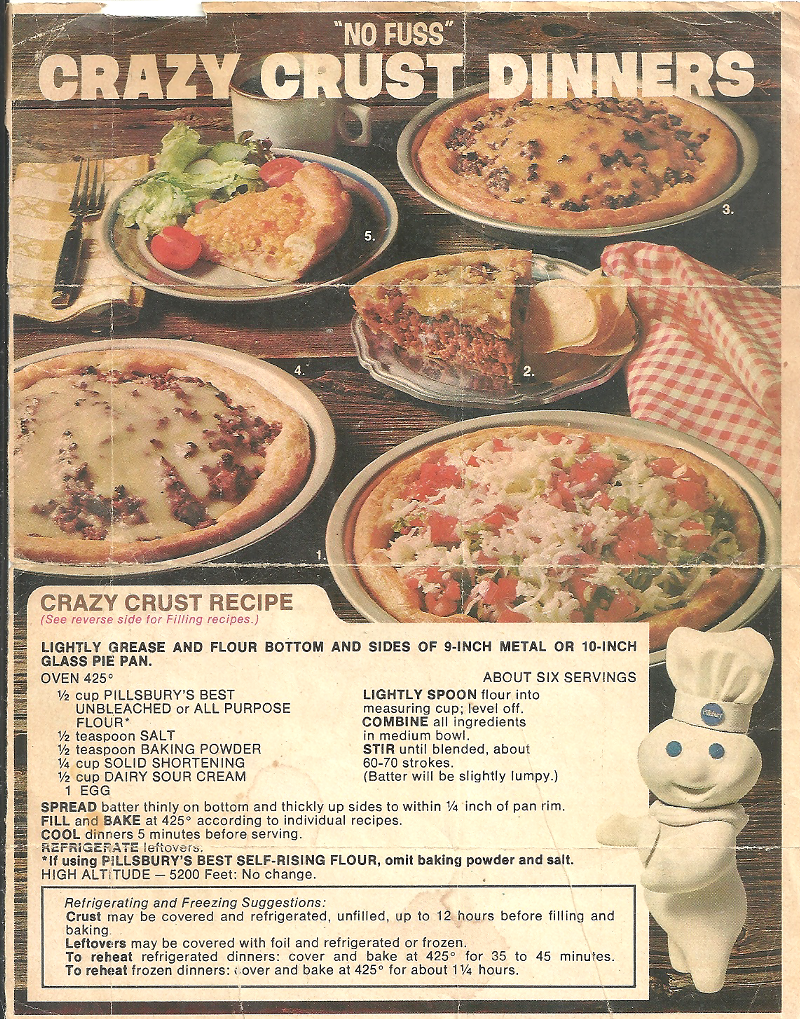
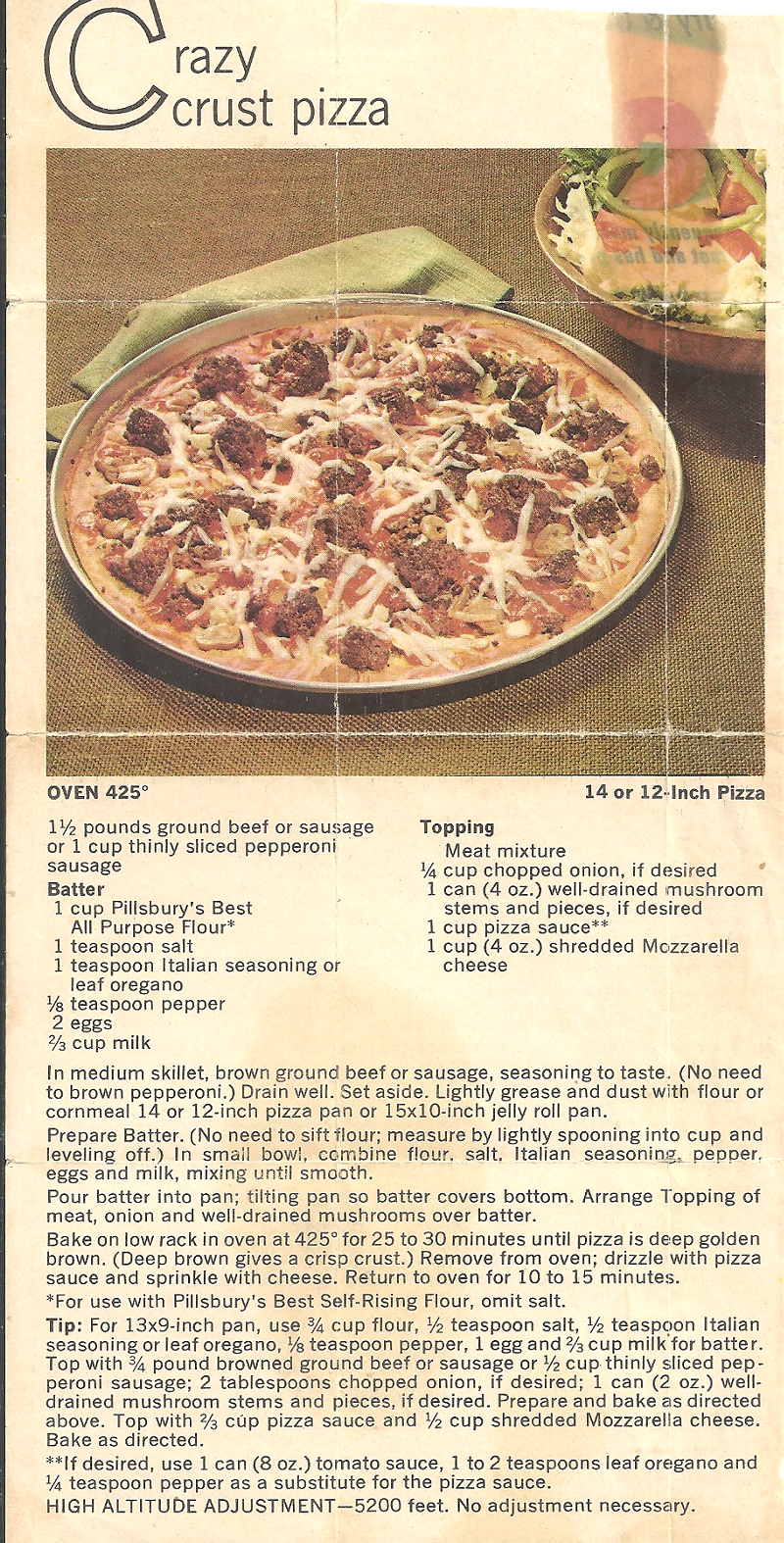
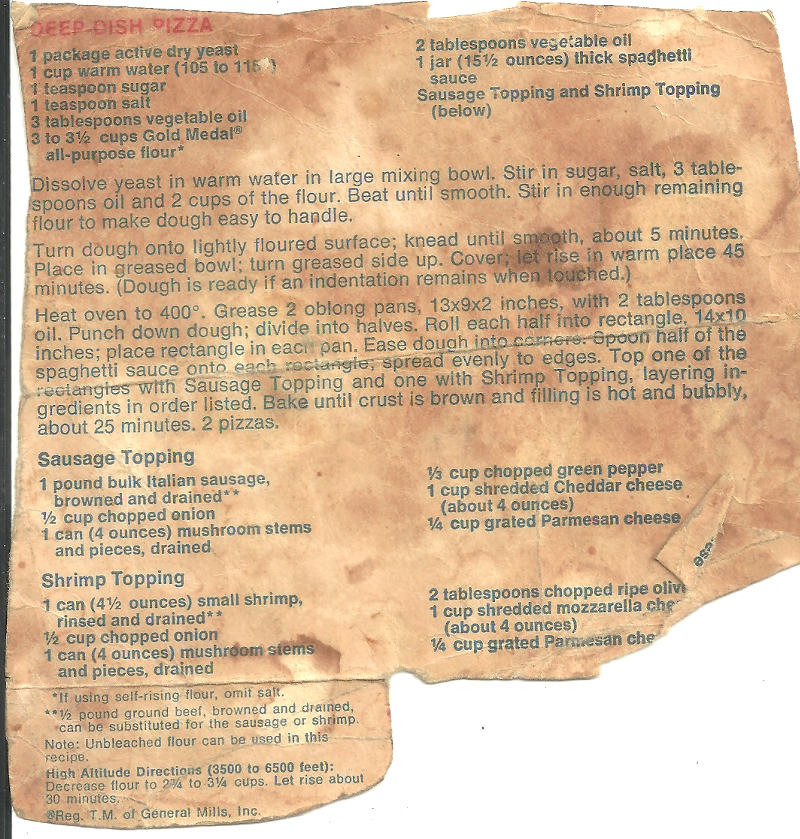

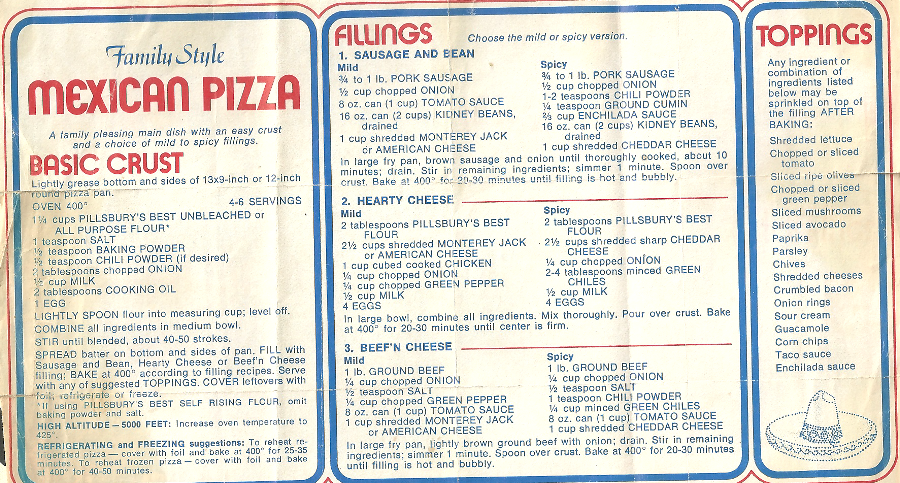
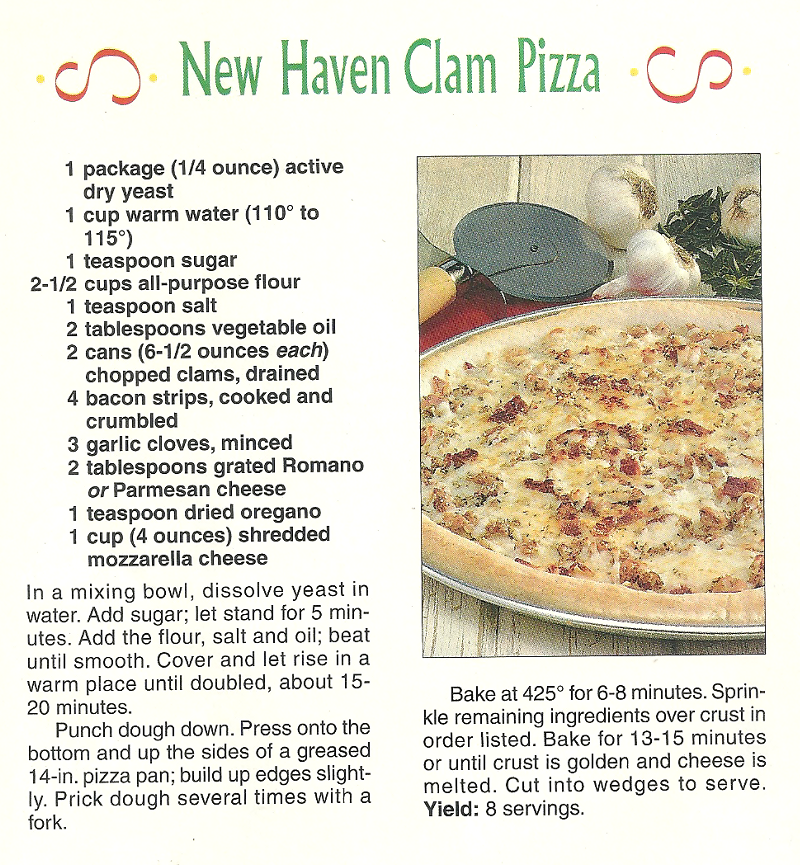
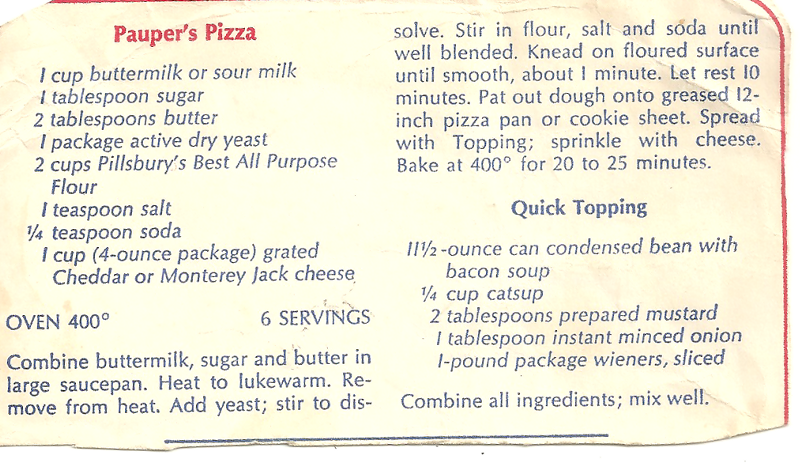


Bearcooks | Food | Steve's Pizza Page
 would make pepperoni pizza for the adults, who often played cards or had cocktails or listened to Herb Alpert or did other adult things, and she'd make spaghetti for us kids, since we were young and suspicious of pizza, especially the mysterious vegetable toppings. (Green olives? That was something adults put in their drinks.)
would make pepperoni pizza for the adults, who often played cards or had cocktails or listened to Herb Alpert or did other adult things, and she'd make spaghetti for us kids, since we were young and suspicious of pizza, especially the mysterious vegetable toppings. (Green olives? That was something adults put in their drinks.) Eventually I got up the nerve to want to try the more adult alternative, and my mom would cut me off a bit of pizza crust, with a red line of tomato sauce painted up the side. It wasn't bad. It probably wasn't very good, either. My mom used the Chef Boyardee pizza-in-a-box kit that most housewives used in the '60s, augmented with a bit of pepperoni or maybe a few sliced green olives. Nevertheless, it was better than the same old spaghetti, and eventually I grew brave enough to eat a whole slice, spicy pepperoni and all. I began helping her make the pizza, usually by carefully placing the pepperoni slices on the pie, and then working up to help her mix the simple dough.
Eventually I got up the nerve to want to try the more adult alternative, and my mom would cut me off a bit of pizza crust, with a red line of tomato sauce painted up the side. It wasn't bad. It probably wasn't very good, either. My mom used the Chef Boyardee pizza-in-a-box kit that most housewives used in the '60s, augmented with a bit of pepperoni or maybe a few sliced green olives. Nevertheless, it was better than the same old spaghetti, and eventually I grew brave enough to eat a whole slice, spicy pepperoni and all. I began helping her make the pizza, usually by carefully placing the pepperoni slices on the pie, and then working up to help her mix the simple dough. My mom continued to use the pizza-in-a-box kit after we arrived back in the states in the summer of 1967. Around 1968 or so, she discovered a simple pizza recipe on the back of the Pillsbury flour bag. Not a very active bread baker, she found the recipe wasn't too difficult, so she began making her pizza dough from scratch from then on, and I began assisting her. I learned how to chop onions and peppers, and how to place the various ingredients on the pizza.
My mom continued to use the pizza-in-a-box kit after we arrived back in the states in the summer of 1967. Around 1968 or so, she discovered a simple pizza recipe on the back of the Pillsbury flour bag. Not a very active bread baker, she found the recipe wasn't too difficult, so she began making her pizza dough from scratch from then on, and I began assisting her. I learned how to chop onions and peppers, and how to place the various ingredients on the pizza. Bunch, the Partridge Family, the Odd Couple, Room 222, Love American Style, and whatever else filled out the ABC schedule.
Bunch, the Partridge Family, the Odd Couple, Room 222, Love American Style, and whatever else filled out the ABC schedule.  the oven, leading to a thin, soggy crust. Loading up a pizza with everything but the kitchen sink also means that no ingredient really shines, and it all just tastes sort of homogenous. If I'm going to go to the trouble of pitting black Kalamata olives for pizza, then I want to taste those Kalamata olives.
the oven, leading to a thin, soggy crust. Loading up a pizza with everything but the kitchen sink also means that no ingredient really shines, and it all just tastes sort of homogenous. If I'm going to go to the trouble of pitting black Kalamata olives for pizza, then I want to taste those Kalamata olives.







